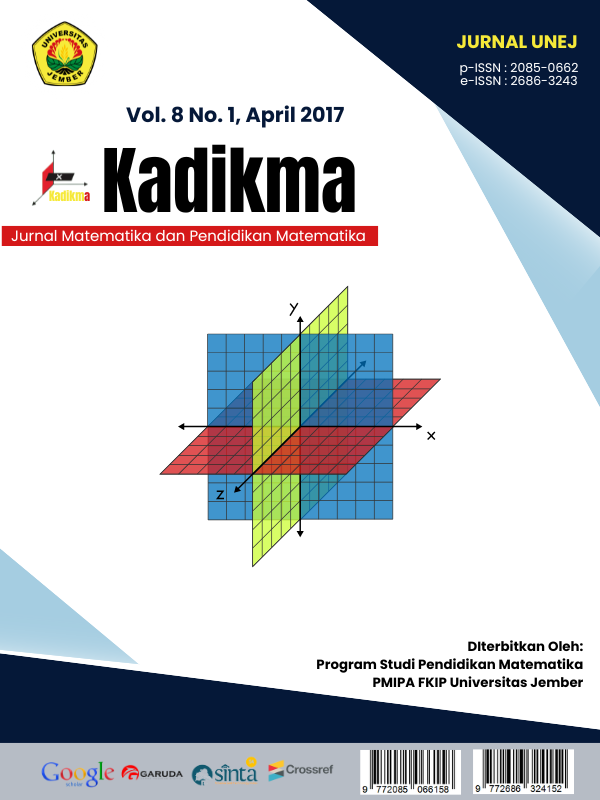TINGKAT BERPIKIR KREATIF SISWA DALAM MEMECAHKAN PERMASALAHAN POLA BILANGAN DAN GENERALISASINYA MELALUI PEMBELAJARANBERBASIS GUIDED DISCOVERY LEARNING
DOI:
https://doi.org/10.19184/kdma.v8i1.5257Abstract
Abstract. This study aims to describe the level of students' creative thinking in solving problem of pattern numbers and it's generalization trough learning based on guided discovery learning. The type of this research is descriptive research with qualitative approach. The data collection method used was test method, observation method, and interview method. The level of students' creative thinking was grouped into five, namely TBK 4 (very creative), TBK 3 (creative), TBK 2 (quaite creative), TBK 1 (less creative) and TBK 0 (not creative). The subjects of the study were the students in class IX C SMP Nuris Jember which amounted to 38 students. The results showed that seventeen students with creative thinking level 4 qualified all creative thinking components that is fluency, flexibility, and novelty. Five students with a level of creative thinking 3 qualified two creative thinking components that is fluency and flexibility. One student with creative thinking level 2 only qualified one creative thinking components that is flexibility. Nine students with creative thinking level 1 only qualified one creative thinking components that is fluency. Six students with creative thinking level 0 did not qualify any components of creative thinking.
Keywords: Level of Creative Thinking, Problem Solving , Guided Discovery Learning


.png)
.gif)




